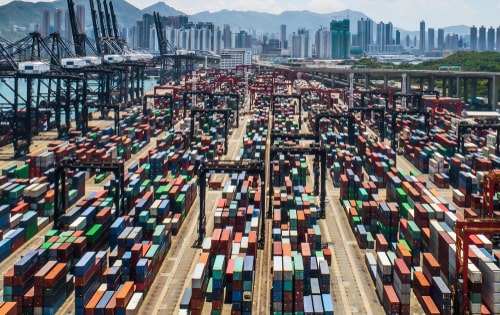
This is the second part in two-part series on the changes in Globalisation and Global Trade due to the COVID-19 pandemic. Read Part One here.
In reality, about 70% of international trade today involves global value chains (GVCs), as services, raw materials, parts, and components cross borders – often numerous times. Once incorporated into final products they are shipped to consumers all over the world.
For example, a smart phone assembled in China might include graphic design elements from the United States, computer code from France, silicone chips from Singapore, and precious metals from Bolivia. Throughout this process, all countries involved retain some value and benefit from the export of the final product. But much of this value added throughout the international supply chain is invisible in traditional trade statistics, which attribute the full value of a good or service to the last country in the chain that finalised production.
To begin providing the evidence needed to respond to policy questions raised by the growing importance of GVCs for trade and investment, the OECD launched an initiative to measure trade in value added (TiVA) terms to provide a more accurate view of the underlying economic importance of trade. With TiVA, the OECD reckons it is able to better identify where value is added along the supply chain, to estimate where income and jobs are created, and to provide a new perspective on bilateral trade imbalances.
Trade is the Common Link
How can risk modelling help to model such imbalances or even begin to shed light on this new era of so-called creative destruction?
For the last few years Russell has been evolving its concept of connected risk, but the common link is trade. Russell has journeyed through all sectors of industry, albeit through the prism of insurance, enabling us to have the conversation on trade with the corporates.
We have helped insurance clients to think about the things that they haven't had the time to think about. In aviation, for example, we've helped them to understand data. We've helped them use data in an integrated fashion in exposure aggregation and pricing - in an integrated way. To the point where today, we've got our clients to understand the connected risk, while also understanding the need for more real time analytics.
The Future is Real Time
Insurers, for example, need to recognise that underwriting risk is connected and changing, and therefore need to be capturing more integrated data on a regular basis. The same applies to corporates grappling with uncertainty because of the pandemic; the need to understand where the trade landscape is going is paramount. We have arrived at the point where in order to get ahead of the competition, you have to look at trade flow right now, and understand the impact on trade from changes in behaviour by actors such as governments and value chains.